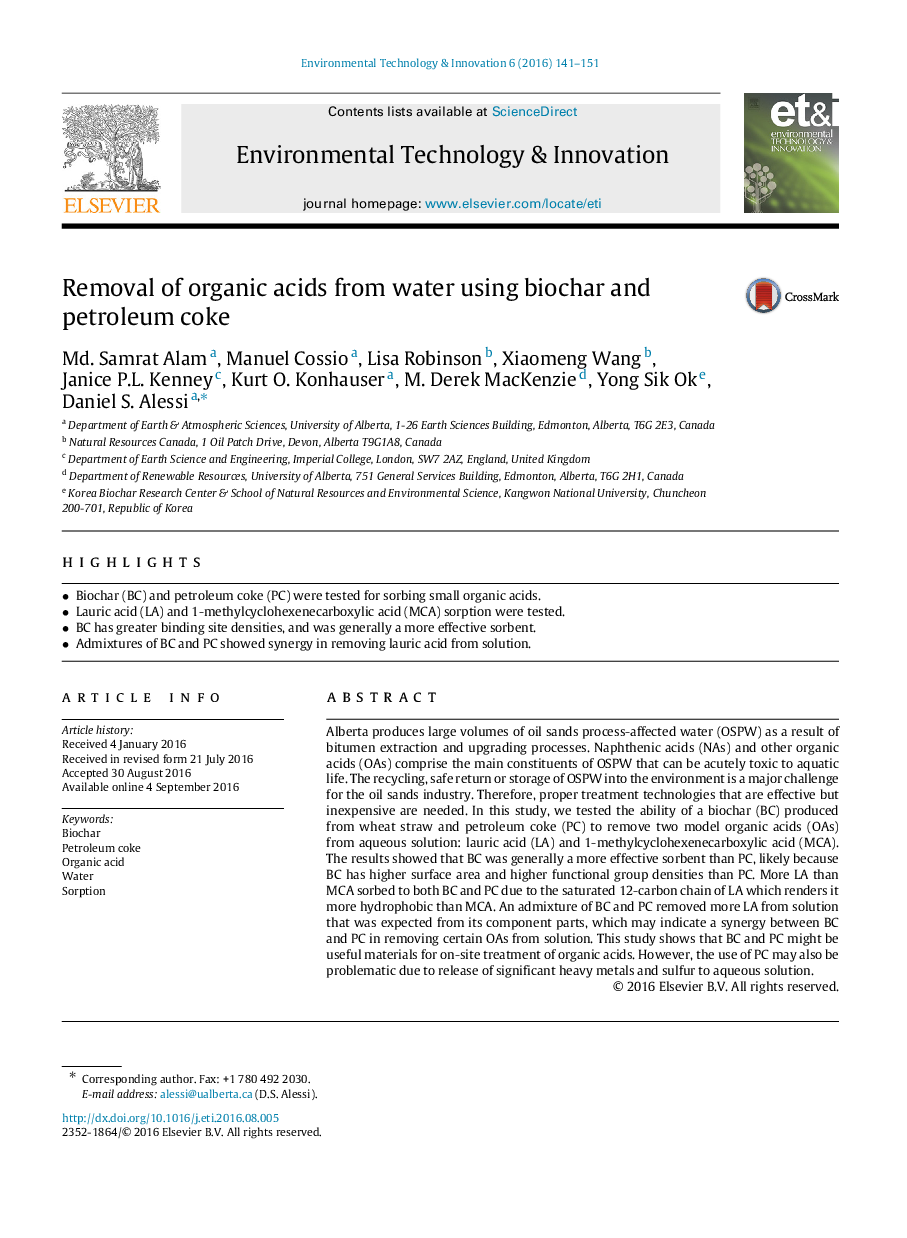| Article ID | Journal | Published Year | Pages | File Type |
|---|---|---|---|---|
| 4428169 | Environmental Technology & Innovation | 2016 | 11 Pages |
•Biochar (BC) and petroleum coke (PC) were tested for sorbing small organic acids.•Lauric acid (LA) and 1-methylcyclohexenecarboxylic acid (MCA) sorption were tested.•BC has greater binding site densities, and was generally a more effective sorbent.•Admixtures of BC and PC showed synergy in removing lauric acid from solution.
Alberta produces large volumes of oil sands process-affected water (OSPW) as a result of bitumen extraction and upgrading processes. Naphthenic acids (NAs) and other organic acids (OAs) comprise the main constituents of OSPW that can be acutely toxic to aquatic life. The recycling, safe return or storage of OSPW into the environment is a major challenge for the oil sands industry. Therefore, proper treatment technologies that are effective but inexpensive are needed. In this study, we tested the ability of a biochar (BC) produced from wheat straw and petroleum coke (PC) to remove two model organic acids (OAs) from aqueous solution: lauric acid (LA) and 1-methylcyclohexenecarboxylic acid (MCA). The results showed that BC was generally a more effective sorbent than PC, likely because BC has higher surface area and higher functional group densities than PC. More LA than MCA sorbed to both BC and PC due to the saturated 12-carbon chain of LA which renders it more hydrophobic than MCA. An admixture of BC and PC removed more LA from solution that was expected from its component parts, which may indicate a synergy between BC and PC in removing certain OAs from solution. This study shows that BC and PC might be useful materials for on-site treatment of organic acids. However, the use of PC may also be problematic due to release of significant heavy metals and sulfur to aqueous solution.
